calsfoundation@cals.org
Arkansas Symphony Orchestra
The Arkansas Symphony Orchestra, based in Little Rock (Pulaski County), provides opportunities for the residents of the state to hear and to perform quality instrumental music. The current orchestra, which incorporated in 1966, is the successor of several previous and shorter-lived attempts to create a sustainable performing group.
Most reports of musical performances in early Arkansas history are of vocal performances, brass ensembles, concerts by amateur groups, recitals by pupils of individual teachers, or church-sponsored events. No regularly performing instrumental groups available for public enjoyment appear in reports until after the turn of the twentieth century. During the early years of 1900s, music clubs over the state, as well as individual music lovers, became vocal about the desirability of musical education for the young and their wish for quality musical performances for the enjoyment of citizenry. Among these was The Musical Group, established in 1923 in Little Rock by Stella Boyle Smith, which has been regarded as an antecedent of the Arkansas Symphony Orchestra.
In 1933, the Little Rock Civic Symphony was organized and directed by Laurence Powell of the music department at Little Rock Junior College as part of the college’s music program. Members of this all-student and all-volunteer group performed regularly scheduled concerts for six years. The business community, having become aware of the economic value of offering cultural opportunities, began to give some support; however, despite a fundraising drive spearheaded by the Business and Professional Women’s Club, continuing financial difficulties caused the group to disband.
From the beginning, efforts to establish a viable symphony organization were plagued by financial and organizational problems. Between 1939 and the early 1960s, orchestra activity was characterized by frequent changes of name and of directors. Groups known as University Civic Orchestra, Arkansas Pop Orchestra, University Concert Society, and the Arkansas Orchestra Society kept activity alive, but none had secure backing, and none survived for long. Conductors who were knowledgeable and interested either left the state or took other positions. Two organizations from this period had somewhat better success than the majority. The State Symphony Orchestra, sponsored by the Arkansas Philharmonic Society and by music clubs across the state, emerged in 1941 and attracted bigger audiences than previous groups. In addition to performing its regularly scheduled concerts, it accompanied ballet and opera productions. It survived—under the direction of successive conductors William Hacker, Joseph Blatt, and Sidney Palmer—until 1952. In 1956, the Little Rock Philharmonic, organized under the direction of Robert Rudolf, who was aggressive in programming and taking the orchestra to various parts of the state, performed many concerts until Rudolf’s departure in 1959.
Dedicated musicians, remaining from previous groups, persisted in efforts to maintain a symphony orchestra, performing occasional concerts under the direction of guest conductors but lacking regular rehearsal and performance space, a dependable source of financial support, and a financial or organizational structure. Once again, in 1960, the musicians reorganized as the Arkansas Symphony Orchestra and gave concerts irregularly under the direction of Vasilios Priakos, who was an experienced and talented director but whose impractical ideas led the organization into debt. Although Priakos’s tenure was brief, he is considered the first of the continuing Arkansas Symphony Orchestra’s directors. Stability began to emerge in the early 1960s with the organization of two supportive groups—the Arkansas Orchestra Society, which serves as a sponsoring and governing body and is made up of interested supporters, business people, and music lovers, and the Arkansas Symphony Orchestra Guild, a highly effective fundraising auxiliary organized as a nonprofit organization. Glen Owens of the music faculty of Little Rock University—now the University of Arkansas at Little Rock (UA Little Rock)—was pressed into service as manager and conductor in conjunction with his work at the university. Owens, with help from Orchestra Society leadership and the Guild, instituted firmer organizational structure and secured financial assistance from individual members of the orchestra and the Guild, a grant from the National Endowment for the Arts and the Arkansas Arts and Humanities Council, and assurance of matching money guaranteed by a group of individual backers. With these assets, debts were paid off, and the Orchestra Society was cleared for incorporation as a functioning business organization in January 1966.
The orchestra was able to move into suitable quarters: first, into an 1890s house in the Quapaw Quarter of downtown Little Rock, then to the fourth floor of a building at St. John’s Center, the headquarters of the Catholic Diocese of Little Rock, in the Pulaski Heights section of the city. In 1996, it secured a long-term lease on a separate building, Byrne Hall, at St. John’s. Concerts which, in earlier days, had been held in the auditoriums at UALR and Hall High School were moved to Robinson Center Music Hall, and a full-time, musically trained and business-oriented executive director was hired. In 2012, the Little Rock Convention and Visitors Bureau announced plans for a major renovation of the Robinson Center. Work began on this project in 2014, during which time the orchestra performed at Maumelle High School and Pulaski Academy, along with initiating a series of neighborhood concerts. With the completion of the renovations in late 2016, the orchestra returned to the Robinson Center.
From 1969 to 1971, the musicians were directed by a number of guest conductors. Dr. Francis McBeth of the music faculty at Ouachita Baptist University (OBU) in Arkadelphia (Clark County) had directed the orchestra several times as a guest conductor and, in 1971, took the responsibility on a regular basis. He filled the position until 1973, before returning to full-time work in composing and teaching at OBU. Three other conductors—Kurt Klippstatter, William Harwood, and Robert Henderson—served from 1973 until 1993. When David Itkin was chosen as director in 1993, he was selected from a field of 231 applicants. In 2010, Philip Mann was selected after a search of over a year. His time as director was widely praised and raised greater public awareness of the orchestra. In 2019, Mann departed, and Geoff Robson, previously the associate director, began serving as the interim artistic director before being appointed permanently to that position; in 2023, he was selected as the orchestra’s conductor.
The Masterworks Series by the full orchestra and the Art of Chamber Music concerts by smaller ensembles, including several quartet groups, are aimed primarily at adults and emphasize classical symphonic and chamber music. Masterworks concerts in several seasons have featured concert performances of stage works such as Prokofiev’s ballet Romeo and Juliet and Puccini operas Tosca and Turandot. Three world premiere performances of orchestral works have been presented. The orchestra continues the practice, introduced early in its history, of programming selections that include massed choral groups from colleges around the state. A number of national and international figures have performed with the orchestra at special concerts, among them Yo-Yo Ma, Van Cliburn, Marilyn Horne, and Itzhak Perlman.
The Pops Live Series attracts various audiences interested in more contemporary music, jazz, show tunes, and standard popular compositions and performers. It often features acclaimed national and international personalities, including, among many others, Doc Severinsen, James Earl Jones, Olivia Newton-John, Shirley Jones, and Liza Minnelli. A Christmas Gala program has long been a popular feature of the Pops Series.
A strong Youth Orchestra program is designed primarily to offer opportunities for student musicians to experience group performances. It gives concerts annually at Horace Mann Junior High School in Little Rock and at Hot Springs Village (Garland and Saline counties) and is available for appearances elsewhere. An Arts Partners program takes music into schools and introduces young people to quality music performed by professionals. The Crayon Concert Family Series is aimed at families with younger children.
One aim of the orchestra is to make orchestral music accessible to as many people as possible. Innovative programming, designed to attract a wide variety of tastes and to increase listeners’ acquaintance with musical repertoire, has attracted many people to orchestra performances. The orchestra does “run out” concerts in various Arkansas cities, such as Harrison (Boone County), Monticello (Drew County), Hot Springs (Garland County), Hot Springs Village, Arkadelphia, Helena-West Helena (Phillips County), Mount Ida (Montgomery County), and more than fifty other communities. The musicians play for an estimated 250,000 people annually at the symphony’s various concerts.
On January 12, 2022, the orchestra announced that they would be relocating from Byrne Hall to a new facility to be constructed downtown on the grounds of Heifer International. On August 10, 2023, ground was broken for the facility to be called the Stella Boyle Smith Music Center, which held its grand opening on September 14, 2024.
For additional information:
Ampezzan, Bobby. “Philip Ryan Mann.” Arkansas Democrat-Gazette, June 29, 2014, pp. 1D, 8D. Online at https://www.arkansasonline.com/news/2014/jun/29/philip-ryan-mann-20140629-1/ (accessed September 12, 2024).
Arkansas Symphony Orchestra. http://www.arkansassymphony.org/ (accessed January 12, 2022).
The Arkansas Symphony Orchestra: On the Edge of the Future. Little Rock: Arkansas Symphony Orchestra, 1998.
Harrison, Eric E. “Artistic Endeavors.” Arkansas Democrat-Gazette, September 12, 2024, pp. 1E, 6E. Online at https://www.arkansasonline.com/news/2024/sep/11/arkansas-symphony-to-unveil-its-new-hq-stella/ (accessed September 12, 2024).
———. “Music Sets Tone for Start of $11.75M ASO Project.” Arkansas Democrat-Gazette, August 11, 2023, pp. 1A, 6A. Online at https://www.arkansasonline.com/news/2023/aug/11/music-sets-tone-for-start-of-1175m-aso-project/ (accessed August 11, 2023).
———. “Orchestra Reveals Plan for $9M Music Center.” Arkansas Democrat-Gazette, January 13, 2022, pp. 1A, 6A. Online at https://www.arkansasonline.com/news/2022/jan/13/arkansas-symphony-orchestra-plans-new-9-million/ (accessed January 13, 2022).
Platt, Ainsley. “Orchestra Opens Newly-Built Home.” Arkansas Democrat-Gazette, September 16, 2024, pp. 1B, 3B. Online at https://www.arkansasonline.com/news/2024/sep/14/arkansas-symphony-orchestra-celebrates-official/ (accessed September 16, 2024).
The Stella Boyle Smith 35th Anniversary Historical Recording. Two CDs with booklet compiled by Eric Harrison. Little Rock: Arkansas Symphony Orchestra, 2000.
Katherine Stanick
Little Rock, Arkansas
 Arts, Culture, and Entertainment
Arts, Culture, and Entertainment Classical Music and Opera
Classical Music and Opera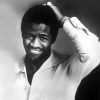 Music and Musicians
Music and Musicians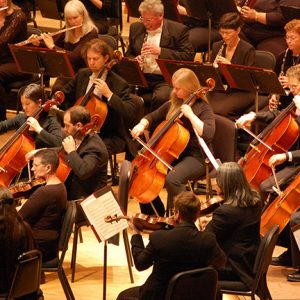 Arkansas Symphony Orchestra
Arkansas Symphony Orchestra 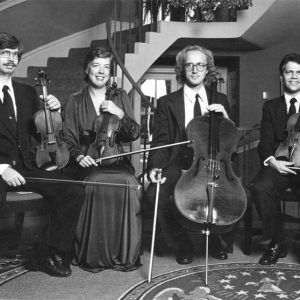 ASO String Quartet
ASO String Quartet 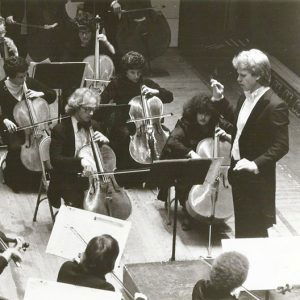 Robert Henderson
Robert Henderson  Robert Henderson
Robert Henderson  David Itkin
David Itkin 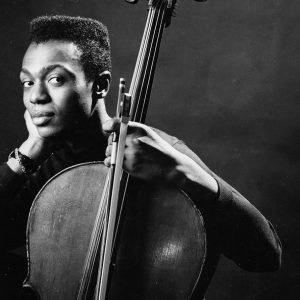 Earnest Lamb
Earnest Lamb  Francis McBeth
Francis McBeth 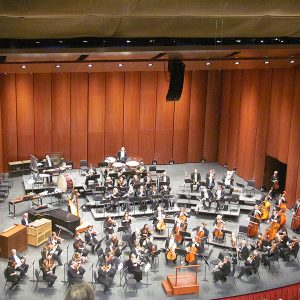 Orchestra
Orchestra 



I am amazed at all the work our grandfather Laurence Powell did in music, from orchestra music to helping Mr. Lomax. I am writing a book about his passion in music, and my greatest accomplishment in life is also my biggest regret. With my passion for music that I inherited from him, I helped implement Harmonica Therapy in Austin, Texas, in 2013, but I could have done so much more in music if I had gone to college in 1981 for music.
Mr. Powell was my grandfather. I have a song that he wrote the music to and I wrote the words. I have the original copy of the score.
It is called “Whispering Spiders: A Song for Medium Voice”–music by Laurence Powell (1973) and words by Thomas P. Zoe.
I got the song registered with the Library of Congress as a Mother’s Day gift to my mom in 1994 after my grandpa died. It must be the last piece published with Mr. Powell’s name on it.
In 1993, I was told this by the music director of Texas A&M: “Wow, who wrote the music to this song? Excellent. Take it to Walt Disney and see if they would use it in a film!”